Multi Tops or Bottoms
Double Tops
In this pattern, there is an increasing trend in price followed by two similar resistance values, and a swing low in the middle. If after the second swing high, the price drops below the low in the middle, it is expected that the price will go down.
So what is happening behind this pattern?
The longers keep buying stock causing an increasing trend in price.
Once the price gets very high, shorters see an opportunity as a fall from that high of a price there could be a major gain, so they sell stock causing the first downturn in the stock.
Longers fight back and buy again with the expectation that the price will continue to go up; this causes the swing low in the middle.
Shorters fight back and sell stock causing the second high swing. If the price declines below the low swing in the middle, longers panic, and will start to sell bringing the price down.
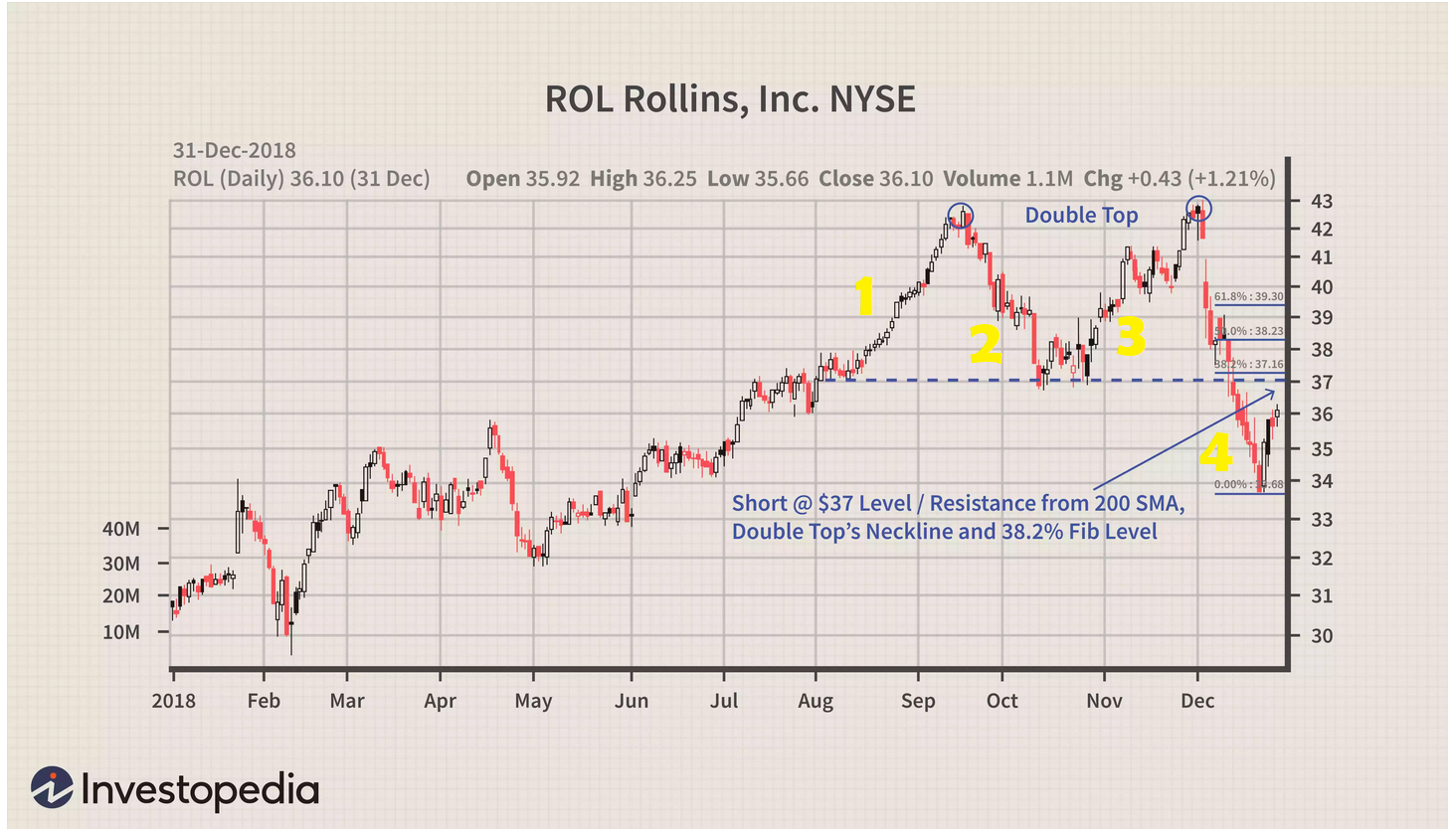
Figure 4.5: Double Top
Double bottoms
The same pattern and underlying mechanism can also happens in reverse and it is called a double bottom, instead.
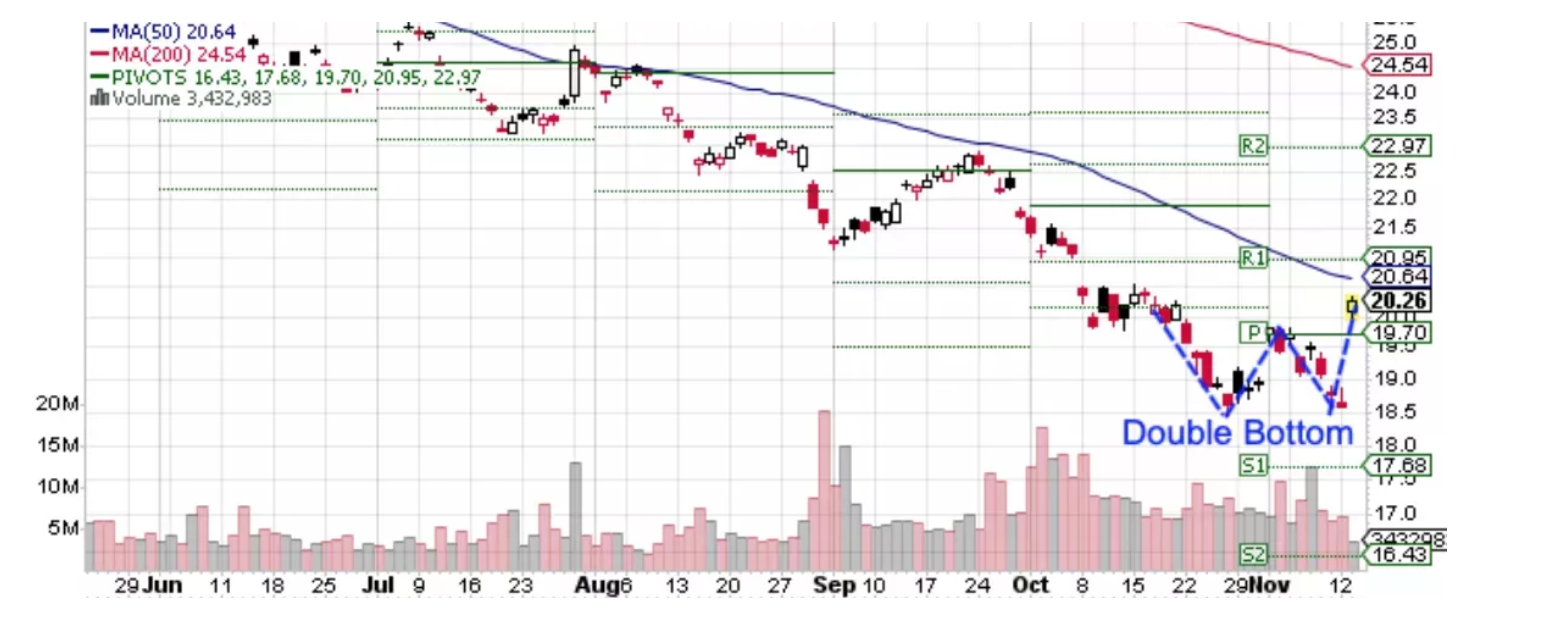
Figure 4.6: Double bottoms
Triple bottoms
The pattern of double bottoms can be seen over three bottoms. Basically, the same approach of the double bottom with basically one more attempt from the opposite site to keep their ongoing trend
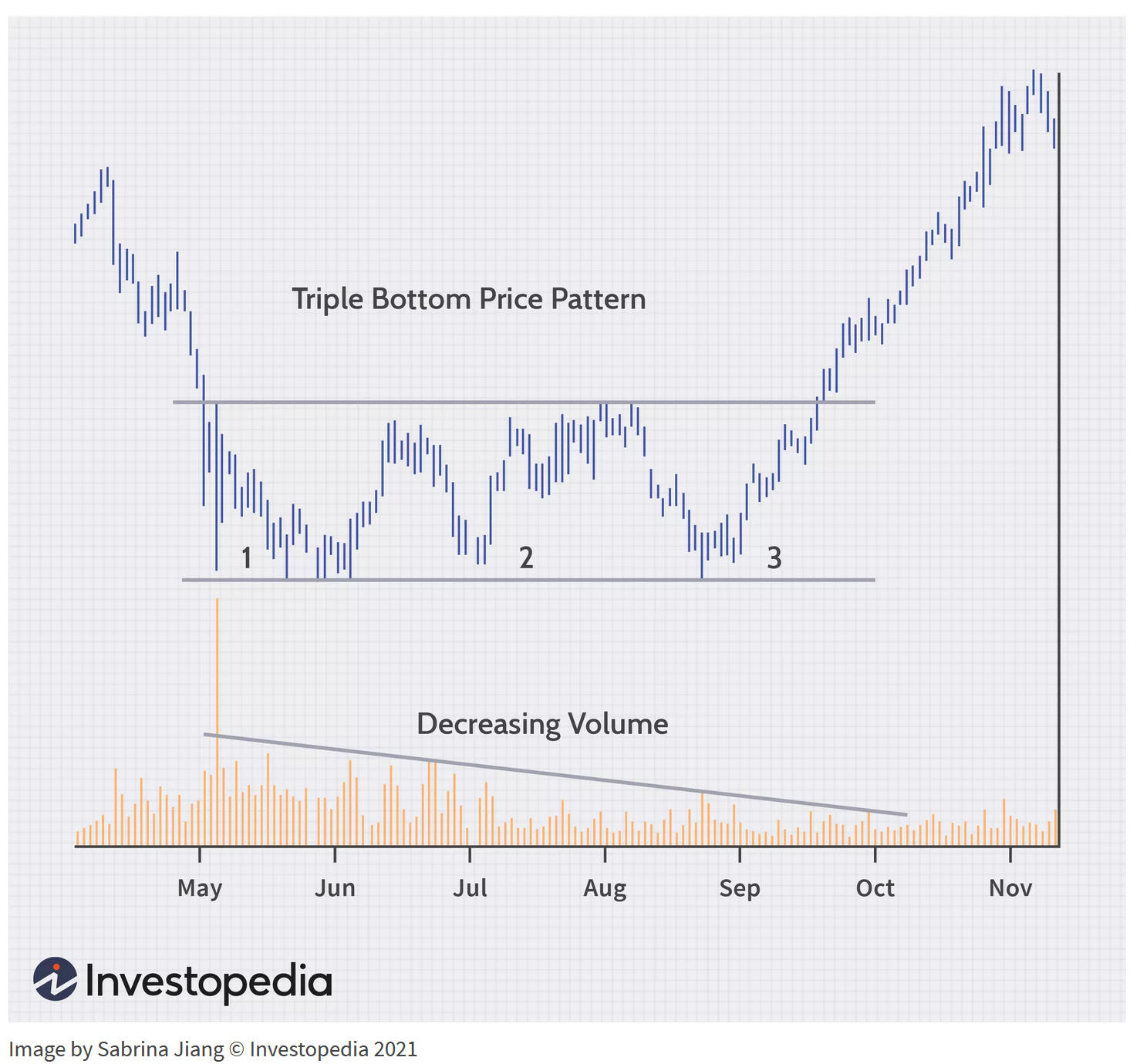
Figure 4.7: Tripple bottoms
Triple tops
Going back to the analogy of a war between longers and shorters, a triple tops is a war fought over three battles. If after the third high swing the price of the stock drops below the line of the lows, then the shorters win. Longers panic and in standpipe sell their shares to avoid loses, triggering a major decline in price.
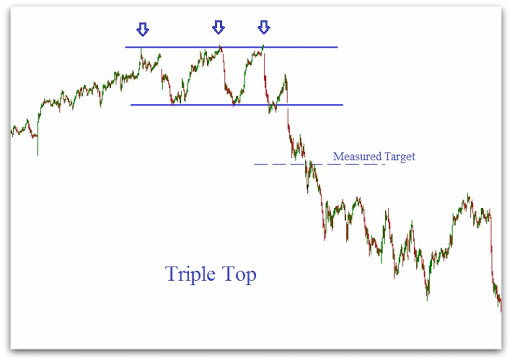
Figure 4.8: Tripple bottoms
Rectangles
At times, you will see the price of a stock bouncing up and down between a clear support and a resistance. This is basically like a pit in which shorters and longers are fighting equally.
The equal fight back and forward is visible in the similar high and low swigns. Eventually, the price moves beyond the boundary limits, indicating who won this battle.
In this example, the longers win. The shorters are forced to buy stock to avoid losing money on their shorts. This makes the price go up.

Figure 4.9: Rectangle
In the next example, there is an intense battle, eventually the price slips under the lower boundary, giving the victory to the shorters. In this example, the falling price, forces the longers to sell their stocks to avoid losing money on a falling price. The increasing availability of shares makes the price to go down.
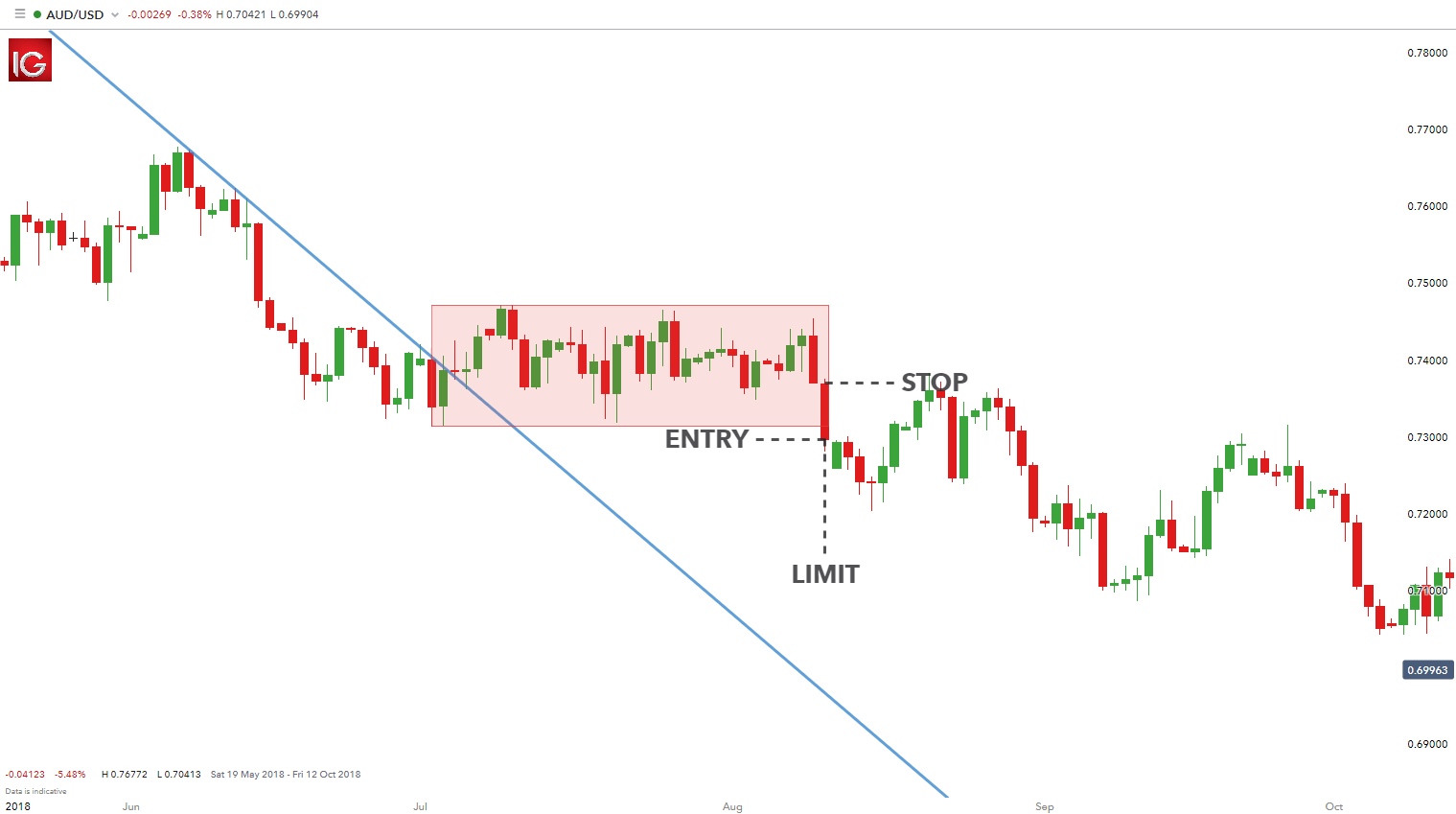
Figure 4.10: Rectangle